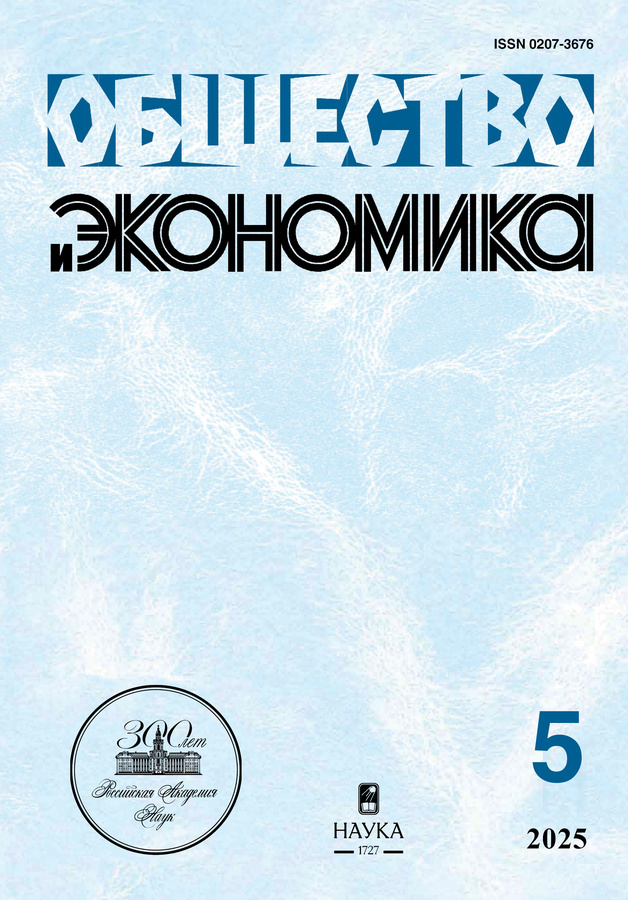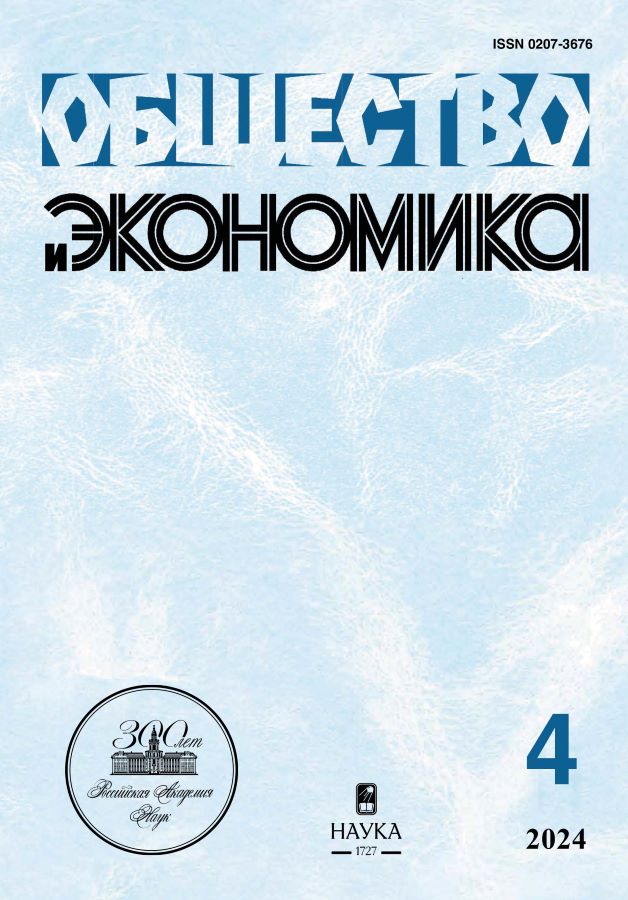Towards a standardized circular economy
- Authors: Kalioujny B.1
-
Affiliations:
- Kazan Federal University
- Issue: No 4 (2024)
- Pages: 44-57
- Section: ECONOMIC POLICY
- URL: https://freezetech.ru/0207-3676/article/view/673775
- DOI: https://doi.org/10.31857/S0207367624040045
- ID: 673775
Cite item
Abstract
The purpose of this article is to outline the future development of the circular economy (CE) concept, which is moving towards a standardized model, although it does not yet have a standardized definition. EC has been developing very dynamically over the past 10–15 years around the world: for example, the process of creating a new multilateral environmental agreement to completely stop the use of disposable plastic products, the development of indicators and tools for implementing the concept, and the introduction of a number of new laws are taking place. Research methodology: an analysis of the process of standardization of a low-carbon economy through the integration of environmental parameters into the socio-economic system (anthropogenic greenhouse gas emissions and their absorption) is carried out from the point of view of reporting by companies. Results of the study: firstly, the key types of reporting by companies on the low-carbon economy and the typology of standards used have been identified. Secondly, existing types of reporting and standards related to the EC model are identified, and possible ways to make the transition to full EC standardization are explored. Originality and contribution of the author: for the first time in Russia, the work presents a comparative analysis between EC and the low-carbon economy, taking into account such parameters as the volumes and dynamics of these markets, the role, structure and prospects for the development of the EPC standardization process.
Full Text
About the authors
Boris Kalioujny
Kazan Federal University
Author for correspondence.
Email: boris.kalioujny@gmail.com
PhD in Economics, expert
Russian Federation, KazanReferences
- Калюжный Б. Роль индикаторов в процессе создания модели ЭЗЦ // Журнал ТБО. №7 (выпуск июль). 2023. С. 34–38.
- Любарская М.А. Теоретические и практические аспекты низкоуглеродного развития экономики // Экономический вектор. № 2 (25). 2021. С.100–104.
- Максимов С.А. Сущность и экономическое значение стандартов на услуги населению // Креативная экономика. № 8. С. 107–112. 2012.
- Митина Н.Н., Гнетов Е.М. Утилизация промышленных отходов в России и в мире: проблемы и решения // Neftegaz.RU. № 3 (март). 2020.
- ИСО Стандарты: онлайн библиотека стандартов (OBP) 2023. URL: https://www.iso.org/obp/ui/#homeПриказ Министерства природных ресурсов и экологии РФ от 27.05.2022 г. № 371 «Об утверждении методик количественного определения объемов выбросов парниковых газов и поглощений парниковых газов».
- Приказ Минприроды РФ от 04.12.2014 г. № 536 «Об утверждении критериев отнесения отходов к I–V классам опасности по степени негативного воздействия на окружающую среду».
- Приказ Минэкономразвития России от 13.05.2021 г. № 267 «Об утверждении методических рекомендаций и показателей по вопросам адаптации к изменениям климата».
- Соколенко В., Дьяченко Ю., Тюрина Е. Углеродные рынки в мире: механизмы и трансформация концепций // Известия ДВФУ Экономика и управление. № 4. 2018. С.119–137.
- Шишмарёв В.Ю. Метрология, стандартизация, сертификация и техническое регулирование // Учебник для студ. учреждений сред. проф. образования. М.: Издательский центр «Академия». 2016; Юлкин М.А., Депова Е.В. Углеродный рынок: состояние и перспективы // Климатическая платформа: выпуск апрель 2023. URL: https://climate-change.moscow/article/uglerodnyy-rynok-sostoyanie-i-perspektivy
- European Commission: Regulation of the European parliament and of the council on shipments of waste and amending Regulations (EU) No 1257/2013 and (EU) No 2020/1056. URL: https://eur-lex.europa.eu/resource.html?uri=cellar:6c0588b1-4878-11ec-91ac-01aa75ed71a1.0001.02/DOC_1&format=PDF
- Germain Y. Groupe Total: des solutions innovantes pour réduire l’empreinte environnementale, le programme Total Ecosolutions // Annales des Mines. Responsabilité et environnement. 2012/2. V. 66. P. 72–77.
- Ghisellini P., Cialani C., Ulgiati S. A review on circular economy: the expected transition to a balanced interplay of environmental and economic systems // Journal of Cleaner Production. 2016. V. 114. P. 11–32.
- IUCN (International Union for Conservation of Nature). Compilation of IUCN WCEL Briefings for Negotiators for INC-3. 2022. URL: https://iucn.org/resources/information-brief/compilation-iucn-wcel-briefings-negotiators-inc-3Kalioujny B. Le modèle de l’économie circulaire dans les systèmes socio-économiques de la filière-bois : le cas de l’oblast de Tomsk // Doctoral dissertation, Economics and finances. University of Burgundy Franche-Comté, Tomsk Polytechnic University. 253 p.
- Kalioujny B., Poteryaiko K. The circular economy in Russia: current issues and prospective elements // International journal for quality research, 2023. (In review).
- Korhonen J., Honkasalo A., Seppälä J. Circular Economy: The Concept and its Limitations // Ecological Economics. 2018. V. 143. P. 37–46.
- LTECV (France): 2015, Loi relative à la Transition Energétique pour la Croissance Verte n 2015-992 du 17 août 2015. URL: https://www.legifrance.gouv.fr/loda/id/JORFTEXT000031044385
- Ministère de la transition écologique et de la cohésion des territoires (Министерство экологического перехода и территориальной сплоченности), I4CE: 2022 Chiffres clés du climat – France, Europe et Monde. Édition 2022. 92 p. URL: https://www.i4ce.org/wp-content/uploads/2022/12/Datalab-chiffres-cles-du-climat-2022-France-Europe-et-monde_au240123.pdf
- Royal Institute of International Affairs: 2020. Global trade of circular economy resources. URL: https://circulareconomy.earth/United Nations. Transforming our world: the 2030 Agenda for Sustainable Development. Report. 2015. 38 p.
- UNEP. Environment Assembly of the United Nations Environment Programme. End plastic pollution: Towards an international legally binding instrument. Draft resolution. Report, Nairobi, March 2022. 4 p.
- UNEP. Guide méthodologique pour la mise en place d’inventaires des déchets dangereux et autres déchets dans le cadre de la Convention de Bâle. 2016. 77 p.
- World Bank. State and Trends of Carbon Pricing 2023. 2023. 78 p.
- World Resources Institute, World Business Council for Sustainable Development. 2015. A Corporate Accounting and Reporting Standard. Revised edition. 116 p.













